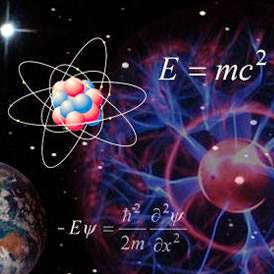 |
| Daniel Mazzone led the project to explore the mechanism that causes samarium sulphide to expand dramatically when cooled. Credit: Brookhaven National Laboratory |
Topics: Materials Science, Quantum Mechanics, Research, Thermodynamics
Most metals expand when heated and contract when cooled. A few metals, however, do the opposite, exhibiting what’s known as negative thermal expansion (NTE). A team of researchers led by Ignace Jarrige and Daniel Mazzone of Brookhaven National Laboratory in the US has now found that in one such metal, yttrium-doped samarium sulphide (SmS), NTE is linked to a quantum many-body phenomenon called the Kondo effect. The work could make it possible to develop alloys in which positive and negative expansion cancel each other out, producing a composite material with a net-zero thermal expansion – a highly desirable trait for applications in aerospace and other areas of hi-tech manufacturing.
Even within the family of NTE materials, yttrium-doped SmS is an outlier, gradually expanding by up to 3% when cooled over a few hundred degrees. To better understand the mechanisms behind this “giant” NTE behavior, Mazzone and Jarrige employed X-ray diffraction and spectroscopy to investigate the material’s electronic properties.
The researchers carried out the first experiments at the Pair Distribution Function (PDF) beamline at Brookhaven’s National Synchrotron Light Source (II) (NSLS-II). They placed their SmS sample inside a liquid-helium cooled cryostat in the beam of the synchrotron X-rays and measured how the X-rays scattered off the electron clouds around the atomic ions. By tracking how these X-rays scatter, they identified the locations of the atoms in the crystal structure and the spacings between them.
“Our results show that, as the temperature drops, the atoms of this material move farther apart, causing the entire material to expand by up to 3% in volume,” says Milinda Abeykoon, the lead scientist on the PDF beamline.
Kondo effect induces giant negative thermal expansion, Belle Dumé, Physics World

No comments:
Post a Comment